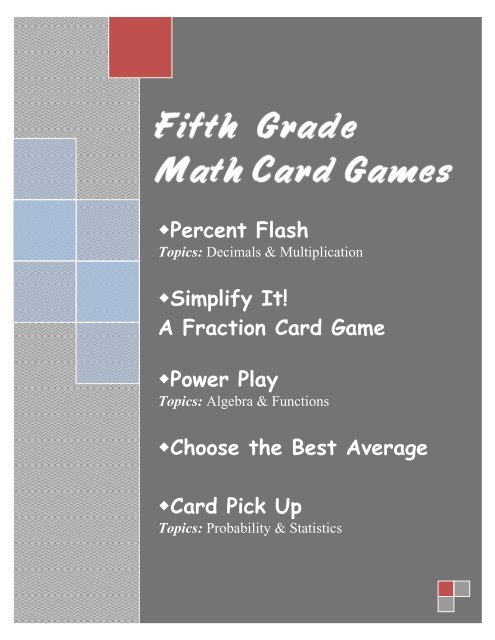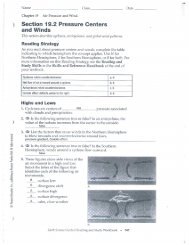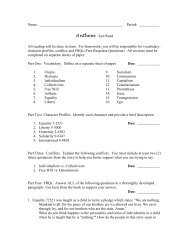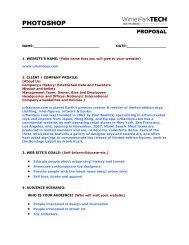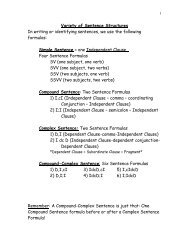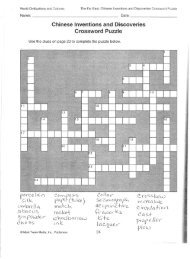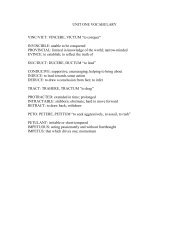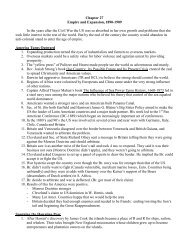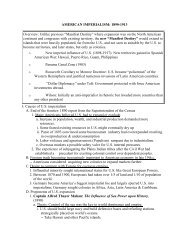Simplify It!: A Fraction Card Game
Simplify It!: A Fraction Card Game
Simplify It!: A Fraction Card Game
You also want an ePaper? Increase the reach of your titles
YUMPU automatically turns print PDFs into web optimized ePapers that Google loves.
Percent Flash<br />
Topics: Decimals & Multiplication<br />
<strong>Simplify</strong> <strong>It</strong>!<br />
A <strong>Fraction</strong> <strong>Card</strong> <strong>Game</strong><br />
Power Play<br />
Topics: Algebra & Functions<br />
Choose the Best Average<br />
<strong>Card</strong> Pick Up<br />
Topics: Probability & Statistics
Percent Flash<br />
by William L. Gaslin, Charles Lund, & Martin M. Gaslin<br />
Topics: Decimals, Multiplication<br />
Practice percentages in this competitive card game! Race to calculate the answer as cards are flipped over. For<br />
each correct answer you give, you'll earn a card. Whoever earns the most cards, wins!<br />
You may work out percentages with a calculator or with pencil and paper. A calculator is a great tool for<br />
understanding the process of finding percent, whereas the pencil and paper method will help with computation<br />
practice. You can decide which method suits you best.<br />
Math Review:<br />
When calculating percent, keep in mind that a percentage is a fraction, or part, of a whole. For example, 50% is<br />
equal to 0.50, and %17 is equal to 0.17. In order to find the percent of a number, you will first need to convert<br />
the percentage you are using into decimal form, then multiply it by that number. For example, 50% of 4 is 0.50<br />
x 4.<br />
What You Need:<br />
One deck of playing cards<br />
Calculator or pencil and paper (for every player)<br />
What You Do:<br />
1. Shuffle the cards and place the deck face down in the center of the playing area. Distribute paper and<br />
pencils (or calculators) to every player.<br />
2. Decide on a percent for the first game. For our example, we'll use 50%. (For first time players, 50%,<br />
10% or 1% are good choices, as they can be simpler to solve with.)<br />
3. Turn over the top card. Players race to find the given percentage (e.g. 50%) of the value of the card.<br />
(Let's say it is a four of hearts.)<br />
4. The first player that can give a correct answer wins the card. (In our example, 50% of 4, the answer<br />
would be "2".)<br />
5. Play until the deck is depleted or time runs out. The player with the most cards wins.<br />
Variations:<br />
Allow the winner of each round to determine the percent used for the next round.<br />
Remove the face cards from the deck in order to simplify the solving process.<br />
Create a challenge. Distribute the cards evenly among the players. All players must keep their cards face<br />
down in a pack. Players simultaneously turn over one card from their pack and place it in the center of<br />
the playing area. The first player that can find the sum of the cards and then find the given percent takes<br />
all of the cards.
<strong>Simplify</strong> <strong>It</strong>!: A <strong>Fraction</strong> <strong>Card</strong> <strong>Game</strong><br />
by William L. Gaslin, Charles Lund, & Martin M. Gaslin<br />
Topics: <strong>Fraction</strong>s<br />
Race to simplify fractions in this fast-paced, two-player game! All you need to play is a deck of cards, paper<br />
and pencils. Shuffle the cards, and you're ready to get started. You'll work with your partner to create fractions.<br />
Find the simplest form first to earn cards and win the game.<br />
<strong>Simplify</strong>ing fractions is an essential skill for every math student in the fifth grade or higher. Students need<br />
continued practice with simplification in order to successfully add, subtract, multiply and divide fractions. Play<br />
this game again and again and work towards mastering this important concept!<br />
Terms to Know:<br />
numerator: the number above the line in a fraction; indicates the number of parts being considered<br />
denominator: the number below the line in a fraction; indicates the total number of parts in the whole<br />
simplest form: the form of a fraction in which the numbers used are as small as possible; found by<br />
dividing both the numerator and denominator by the same number<br />
What You Need:<br />
Deck of playing cards<br />
1 game board (a piece of paper with a horizontal line drawn across the center, to represent a fraction bar)<br />
Scratch paper and pencils (optional)<br />
What You Do:<br />
1. Remove all of the face cards from the deck, then shuffle it.<br />
2. Distribute the deck evenly between two players. Players should place their mini-decks face down in<br />
front of themselves.<br />
3. Play begins by having the players simultaneously turn over two cards each and place them on the game<br />
board. Each player should place one card above the fraction bar, to represent the numerator, and one<br />
card below the fraction bar, to represent the denominator. There should be two cards above and two<br />
cards below - four cards total.<br />
4. The first player to correctly simplify the fraction shown by the cards wins all four cards. If a tie results,<br />
split the cards evenly.<br />
5. Play continues until one player has accumulated all of the cards or time is up. The player with the most<br />
cards wins.
Power Play<br />
by William L. Gaslin, Charles Lund, & Martin M. Gaslin<br />
Topics: Algebra & Functions<br />
Exponents can be tricky at first, and this game provides plenty of practice! Draw from a deck of cards to find<br />
your numbers. Create a problem using exponents, then use a calculator or scratch paper to work out the<br />
answers. Help one another out if someone gets stuck. Try to create problems that result in the largest products.<br />
If you do well, you'll win! You'll be working on multiplication and improving your understanding of exponents<br />
at the same time!<br />
Term to Know:<br />
exponent: shows how many times the number is to be used in multiplication; it is written as a small number at<br />
the upper right of a base number (e.g. 3 4 = 3 x 3 x 3 x 3, which computes to 81.)<br />
What You Need:<br />
One deck of cards<br />
Calculator or scratch paper and pencil<br />
Paper and pencil (for recording scores)<br />
What You Do:<br />
1. Players take turns drawing cards from a well-shuffled deck. Then, they use the two numbers they've<br />
drawn to create a problem with exponents. (For example, if they drew a 3 and a 4, they could create the<br />
problem 3 4 or 4 3 .) Keep in mind, aces = 1, jacks = 11, queens = 12, and kings = 13.<br />
2. Players may solve these problems using a calculator or scratch paper. (A calculator will put the focus on<br />
the skill, whereas scratch paper puts the focus on the computation.)<br />
3. Record totals for each round. At the end of 5 rounds, add the totals up to see who's won!<br />
Variations:<br />
Require players to use the smaller number as the exponent, or the larger.<br />
Play for the smallest total.
Choosing the Best Average<br />
by William L. Gaslin, Charles Lund, & Martin M. Gaslin<br />
Topics: Probability & Statistics,<br />
Practice finding the mean, or average, of different data sets in this math card game. <strong>It</strong>'s a great way to work on<br />
division and improve your fifth grader's understanding of statistics. All you need is a deck of cards, a score<br />
sheet, and a pencil, and you'll be ready to play! You'll find that, through practice, your child will become<br />
comfortable with finding the mean of a set of numbers. Check out the variations at the bottom of the page for<br />
ideas on how to adapt this game to practice other statistics concepts.<br />
Term to Know:<br />
mean: the average of a set of numerical data; found by finding the sum of the elements, then dividing by the<br />
number of elements (For example, in a data set of 1, 4, 3, 6, and 1, the mean would be 1 + 4 + 3 + 6 + 1 = 15 / 5<br />
= 3.)<br />
What You Need:<br />
One deck of playing cards<br />
Choosing the Best Average record sheets<br />
Pencil<br />
Calculator (optional)<br />
What You Do:<br />
1. Shuffle the deck and deal 7 cards to each player.<br />
2. Players record the value of their cards. For the purposes of this game, aces = 1, jacks = 11, queens = 12,<br />
and kings = 13.<br />
3. Next, players find the mean of their cards. This is done by adding up the values of all 7 cards, then<br />
dividing by 7. (You may use a calculator for this step, if you'd like.)<br />
4. Players record their mean on the record sheet.<br />
5. Play continues for 10 rounds. At the end of 10 rounds, players should add up all of their means, then<br />
find its mean by dividing by ten.<br />
6. The player with the highest final score wins.<br />
Variations:<br />
<strong>Simplify</strong> the scoring. Award a player either 1 or 0 points for each round, depending on whether or not<br />
they had the highest mean.<br />
Change the number of cards used in each round.<br />
Calculate median, or the number that falls exactly in the middle when the data is arranged in numerical<br />
order, instead of mean.<br />
Calculate mode, or the number that occurs the most. If there are multiple modes in a data set, the mean,<br />
or average, is taken from the total of the modes.<br />
Allow players to choose either the mean, median, or mode as their score for each round.<br />
Change the scoring so that each round is worth a letter in the word AVERAGE. In this variation, the<br />
first player to spell the entire word wins.
<strong>Card</strong> Pick Up<br />
by William L. Gaslin, Charles Lund, & Martin M. Gaslin<br />
Topics: Probability & Statistics<br />
Use a deck of playing cards to improve math reasoning skills! This two-player game requires logic and critical<br />
thinking. If your child likes puzzles, this activity will be a big hit!<br />
The goal of <strong>Card</strong> Pick Up is to try to control the outcome of a game through simple decisions. You will need to<br />
assess all of your possible moves along with the other player's strategy in order to win. This is a wonderful way<br />
to hone reasoning skills with elementary school learners, and have fun doing it.<br />
What You Need:<br />
One deck of cards<br />
What You Do:<br />
1. Remove one suit, ace through jack only, from the deck. Lay out the cards, face up, in order, in a row<br />
(ace on one end, jack on the other).<br />
2. Players take turns removing 1-2 cards each time. <strong>Card</strong>s must be removed from least to greatest, in order.<br />
(For example, the first player could take the ace and 1, the second player could take the 2, the first<br />
player could then take the 3, and so on.)<br />
3. The player who takes the last card wins!<br />
Want to add some challenge? Add a card or two to the line-up by playing with the ace through queen, or ace<br />
through king of a suite. Or, for an even more complex game, use all four suits and line them up separately,<br />
allowing players to take 1-2 cards from any line-up on each turn. <strong>It</strong>'s like playing four games at once!<br />
Whichever version you play, be sure to talk to your child about the outcome. What moves led to her winning or<br />
losing? What could a player have done differently to adjust the outcome? Just as in tic-tac-toe, there's strategy<br />
and probability involved.


